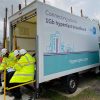ISP Gigaclear and RSN Call on Ofcom to Consider Full Fibre in its USO
The Rural Services Network and UK ISP Gigaclear have today joined others by calling on Ofcom to ensure that their forthcoming 10Mbps Universal Service Obligation (USO) for broadband will reflect the national plan for “full fibre” (FTTP) coverage, which the government hopes could reach universal coverage by 2033.
At present the USO proposes to give people the “legal right” to “request” a broadband download speed of at least 10Mbps (1Mbps upload) from a supporting ISP. The new measure is due to be enforced from 2020 (see the latest update) and will focus on those in the final 1-2% of the UK, which aren’t expected to benefit from existing “superfast broadband” (30Mbps+) deployments (c.600,000 premises).
Meanwhile a growing number of organisations and alternative network (altnet) providers have been calling for the USO to be modified, not least in order to take account of the Government’s new aspiration to cover the whole of the United Kingdom in Gigabit capable “full fibre” (FTTP/B) broadband networks by 2033 (details).
Advertisement
As part of their 2033 proposal, the Government estimated that pushing full fibre out to reach the final 10% of areas (i.e. the hardest to reach) was likely to require “additional funding” (state aid) of around £3bn to £5bn in order to support commercial investment.
However Gigaclear, which says they “would not be able to come forward” as a USO supplier under Ofcom’s proposed design, has today called on the regulator to “reflect on how the USO will interact with the delivery of full fibre” in their design for the new obligation. In particular both they and the RSN seek the following two changes.
Gigaclear / RSN Proposed USO Changes
1. Maximise the opportunity for the USO to support the delivery of ‘future-proofed’ connectivity where appropriate, as opposed to funding solutions that will quickly become obsolete as consumer bandwidth demands increase.
To do this, we propose that Ofcom compel Universal Service Providers delivering the USO to use existing and accessible full fibre networks that lie within a reasonable distance of the premises requesting a connection through the USO. Whilst this may imply some additional up-front cost, it will deliver a long-term solution compatible with the FTIR.
2. Mandate USPs to consider the impact on planned full fibre network rollout when providing universal service connections.
If premises are served by the USO, they may become ineligible for state aid programmes providing full fibre connectivity. To rectify this, premises could be exempt from requesting a USO connection when there are clear plans in place to reach that locality with full fibre through a state aid programme.
Alternatively, USPs could be compelled to explore using the network of the full fibre provider who is due to serve that premises, rather than rolling out its own infrastructure. This would then avoid duplicating costs and resources required to connect this premises, thereby maximising full fibre coverage.”
On top of that the RSN said they also consider that 10Mbps is “likely to prove too low” a USO limit by the time it is implemented, not least because Ofcom will probably “want to leave it unchanged for a few years after 2020 to let the USO bed down.” As such the group believes that the Government should ask Ofcom to review the limit prior to its implementation, taking account of the growth in demand for bandwidth.
RSN Statement
In short, the RSN welcomes the implementation of the USO, but given the compelling ambitions of the [Future Telecoms Infrastructure Review] Ofcom should explore how it can deliver full fibre networks wherever possible. If the above proposals were to be adopted the RSN believes that more rural homes and businesses would benefit more quickly from access to full fibre.
Aligning the USO with the new full fibre aspiration makes a lot of sense, although there would be some complex challenges to overcome with the above ideas and it’s worth remembering that the USO is only intended as a legal backstop; this merely designates the minimum level of service delivery expected and not the maximum. Any significant changes to this policy may risk delaying its implementation beyond 2020.
Advertisement
Meanwhile the idea of compelling USPs to “use existing and accessible full fibre networks that lie within a reasonable distance of the premises requesting a connection” is a statement that could mask some potential problems. For example, the trouble with balancing the often significant differences that exist in wholesale access, service and pricing between networks.
However the proposal suggested for no.2 might be easier to implement, if only because the current USO already includes a section that suggests “only premises who do not have a connection which meets the USO specification, or are unlikely to be connected under publicly funded procurements which meet the minimum specification, will be eligible to be connected.”
Finally, setting the USO speed too high too soon might also run the risk of distorting the competitive market, particularly for many smaller alternative network providers. The existing USO policy does include a speed review clause, although this is rather strict and indicates that we probably won’t see the USO speed being lifted for quite a few years.
The 2033 plan is currently little more than an unfunded aspiration, at least until some real money is set aside to fuel it and a procurement framework designed, ideally alongside solid targets (similar to the Broadband Delivery UK programme) and cross-party support. Otherwise the 2033 date falls more into the realm of wishful thinking and could easily be changed or even abandoned by a future government.
Advertisement
At the end of the day 2033 is still 15 years away and currently lacks a solid foundation. We may also need to wait until various other schemes, such as the new contracts for Wales, Scotland and N.Ireland, pan out before knowing how best to approach setting a faster USO or funding FTTP for 2033.
In the meantime many of those living in disadvantaged areas probably don’t want to be told that they might have to wait even longer.
Mark is a professional technology writer, IT consultant and computer engineer from Dorset (England), he also founded ISPreview in 1999 and enjoys analysing the latest telecoms and broadband developments. Find me on X (Twitter), Mastodon, Facebook, BlueSky, Threads.net and Linkedin.
« Giganet ISP Launch New Website and FTTP, G.fast, Leased Line Prices


















































Comments are closed